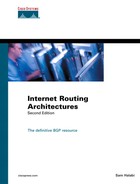Frequently Asked Questions
Q— Are there other NAPs besides the four NSF-awarded NAPs?
A— Yes. As connectivity needs to keep growing, more NAPs are being created. Many exchange points are spread over North America, Europe, Asia/Pacific, South America, Africa, and the Middle East.
Q— If I am a customer of a provider, do I have to connect to a NAP?
A— No. NAPs are mainly for interconnections between service providers. If you are a customer of a provider, your connection will be to the provider only. However, how your provider is connected to one or more NAPs, or via direct interconnections, can affect the quality of your service.
Q— Is the function of the route server at the NAP to switch traffic between providers?
A— No. The route server keeps a database of routing policies used by providers. Providers use the NAP physical media to exchange traffic directly between one another.
Q— Do all providers that connect to a NAP have to peer with the route server?
A— Although this is a recommended procedure, it is not a requirement, and most actually don't.
Q— What is the difference between IRs and IRRs?
A— Internet Registries (IRs) such as Network Solutions, Inc. are responsible for registration services such as registering Internet domain names. Internet Routing Registries (IRRs) such as RADB are responsible for maintaining databases of routing policies for service providers.
Q— How are database services different from the Routing Arbiter Databases?
A— Database services are part of the network information services. These databases include communication documents such as RFCs. The RADB is a database of routing policies.
